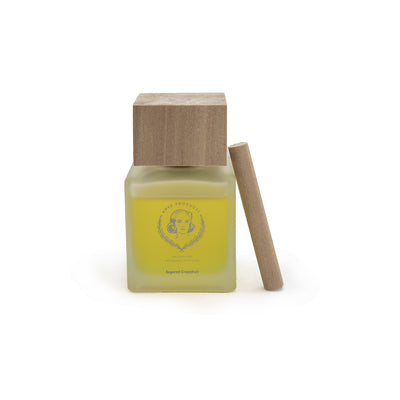Kalanchoes are a succulent group of plants that are tough, heat resistant and low maintenance.
Most suitable climate for Kalanchoes
Ideal conditions for Kalanchoes would be warm and dry summers, but it grows almost everywhere, even in the subtropics, and it will tolerate light frost.
What Kalanchoes need
Location: full sun and light shade. It will also survive indoors provided it is placed in a well-lit area and only watered occasionally.
Soil: for pots, use a potting mixture specially designed for succulents. Outside in the garden, it prefers well-drained, sandy soil.
Water: in summer, if it gets very hot, then water once a week, but keep it drier during winter.
Fertilizing: just add compost to the soil.
Get more value
It is very easy to propagate additional stocks of Kalanchoes using the new rosettes it produces on its stem and the tiny new leaves that sprout from the eyes on the long flower stalk. Cut the baby rosettes off the plant with a piece of stem attached to each, and plant them in a damp mixture of river sand and fine compost, or commercial seedling mix.
To grow the leaves on the stalk, wait until the flowers are spent and then remove the stalk. Cut it into sections, ensuring there is about 5 to 7 cm of stalk below each leaf. Let these cuttings dry out for about a week and then plant them in the same mixture. With both rosettes and cuttings, keep them in a warm and sheltered place away from direct sun, and keep the soil moist. Once roots have developed, you can water the young plants more often and treat them with a fungicide to prevent root rot.
Kalanchoes In a nutshell
- Dramatic, especially when planted en masse.
- Lovely foliage colours and good foliage contrasts.
- Low water consumption and heat resistant.
- Pretty in containers.
Cultivars
Kalanchoe thyrsiflora
Rounded, green leaves covered in silvery-white bloom with conspicuous red edges form compact clumps up to 30 cm tall. In their second year of growth each rosette of leaves produces a tall flower spike, often exceeding a metre in height. The inflorescence is tightly packed with yellow flowers emerging from a grey tube. They are nectar rich, attracting sunbirds to the garden. This is a tough, hardy and enduring plant found wild in many parts of Southern Africa. It adapts well to local garden conditions.
Kalanchoe blossfeldiana
This is a quick-growing succulent from Madagascar that has been used by pot-plant growers to cultivate a profusion of hybrids in a variety of flower colours for use indoors. One of these hybrids is always in bloom at some point throughout the year. They grow beautifully in good light conditions indoors, but also flourish in hanging baskets or pots on the patio. The hybrids can be planted outside in full sun in frost-free areas.
Kalanchoe tomentosa
Also known as the panda plant or chocolate soldier, this Kalanchoe is an erect, multi-stemmed succulent that can grow up to 90cm tall. It has loose rosettes comprised of furry, oval leaves. The light grey velvety leaves are covered in dense hairs and look like they have been dipped in chocolate. This plant is native to Madagascar, where it grows in harsh terrain in rocky soils. Insignificant yellow-green tubular flowers appear in spring and summer.
It is for the lovely foliage and ease of growth that this slow-growing succulent has become a favourite container plant. It likes a few hours of morning sun and fairly dry conditions (especially in winter). If kept indoors, grow it on a sunny windowsill or in bright, indirect light.
Water only when the soil feels dry, and feed regularly during the summer months with a water-soluble fertiliser. To keep it free of dust the leaves can be gently brushed with a soft toothbrush. Propagate more plants by leaf cuttings in spring.
Beware: Kalanchoe tomentosa is toxic to cats and dogs.
Kalanchoe fedtschenkoi
This upright succulent is sometimes also referred to as the variegated kalanchoe. It is characterised by the serrated edges on the thick, fleshy leaves and their blue-green sometimes tinged with pink colouration. This colouring of the leaves is the most fascinating aspect to this plant and is very striking. Tubular orange flowers are borne on taller stems above the foliage in spring. This Kalanchoe makes a great specimen for small pots in hot sunny positions and will also be great in rockeries, as a border edging and even the centre plant for hanging baskets.
Kalanchoe pumila
Described by some as being insignificant and unassuming, it is without a doubt one of the most versatile plants for setting off or highlighting other plants in the garden. Seldom exceeding 25 cm in height, the low-growing ground cover spreads to a diameter of some 40 to 50 cm. The fleshy leaves are serrated along the margin of their front half and smooth, narrow and tapered towards the base.
The unusual mid-green to purple colouring is accentuated by a white, chalk-like covering, creating a dusty, grey effect on the mature foliage. New growth tips are distinctly white. During winter and early spring the charming little plants produce clusters of small, mauve pink flowers held above the foliage. This creates an extremely pleasing colour combination of muted, harmonising shades seldom seen in the garden.
Being of the succulent family, Kalanchoe Pumila withstands dry conditions, thrives in full sun and requires very little attention. In return it offers yea-round good looks, a neat and tidy appearance and a flush of flowers in the often barren winter months.








